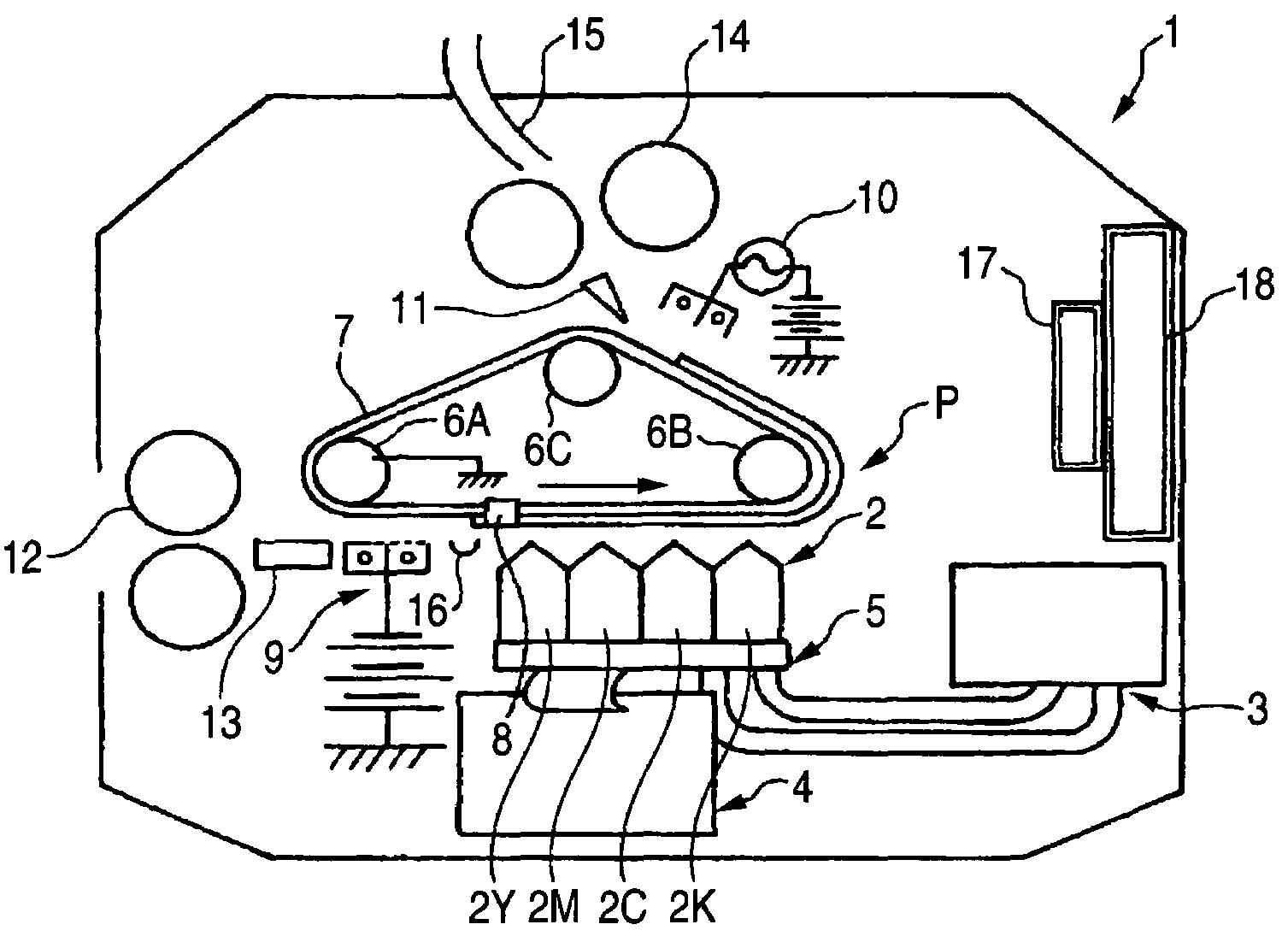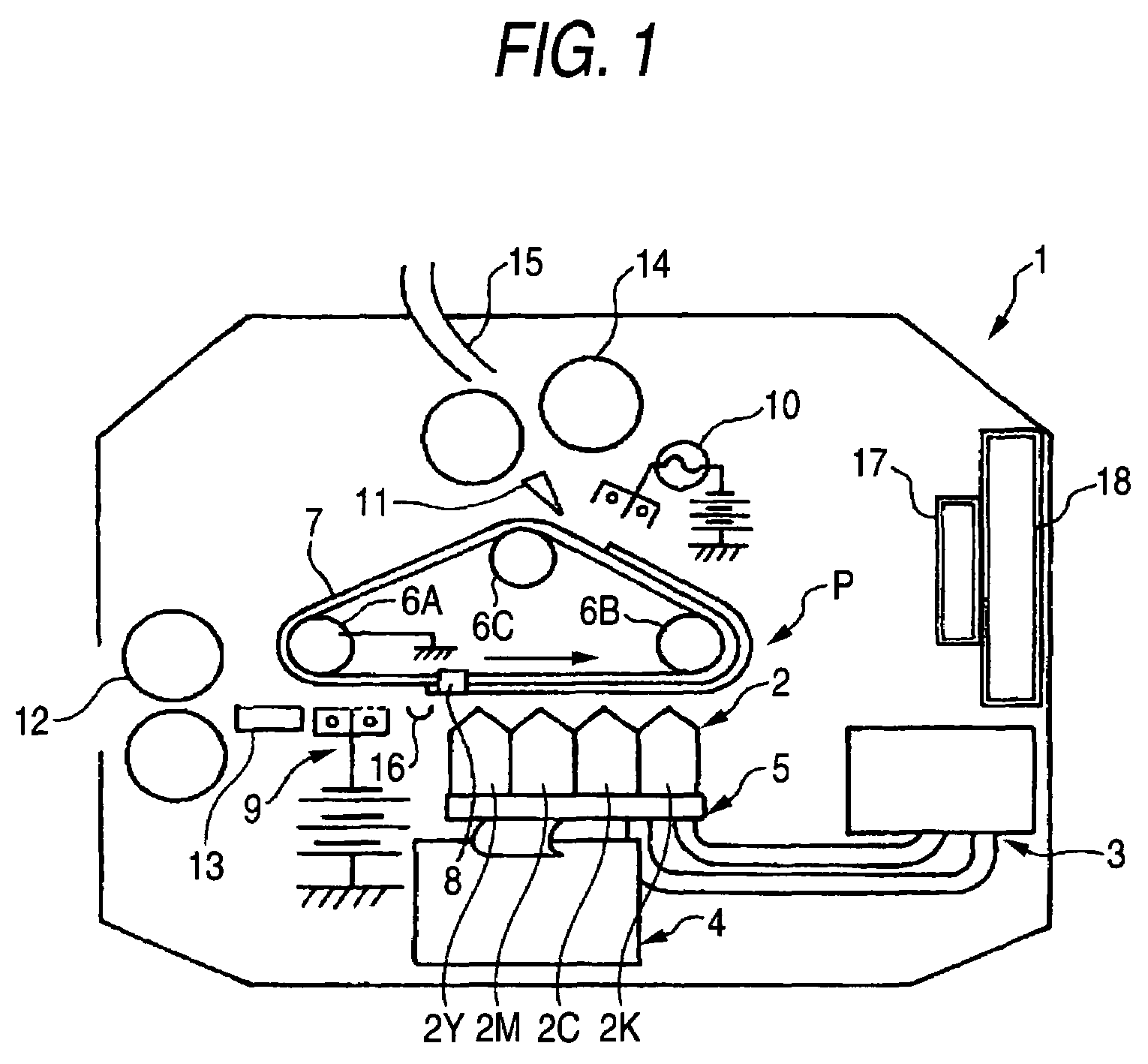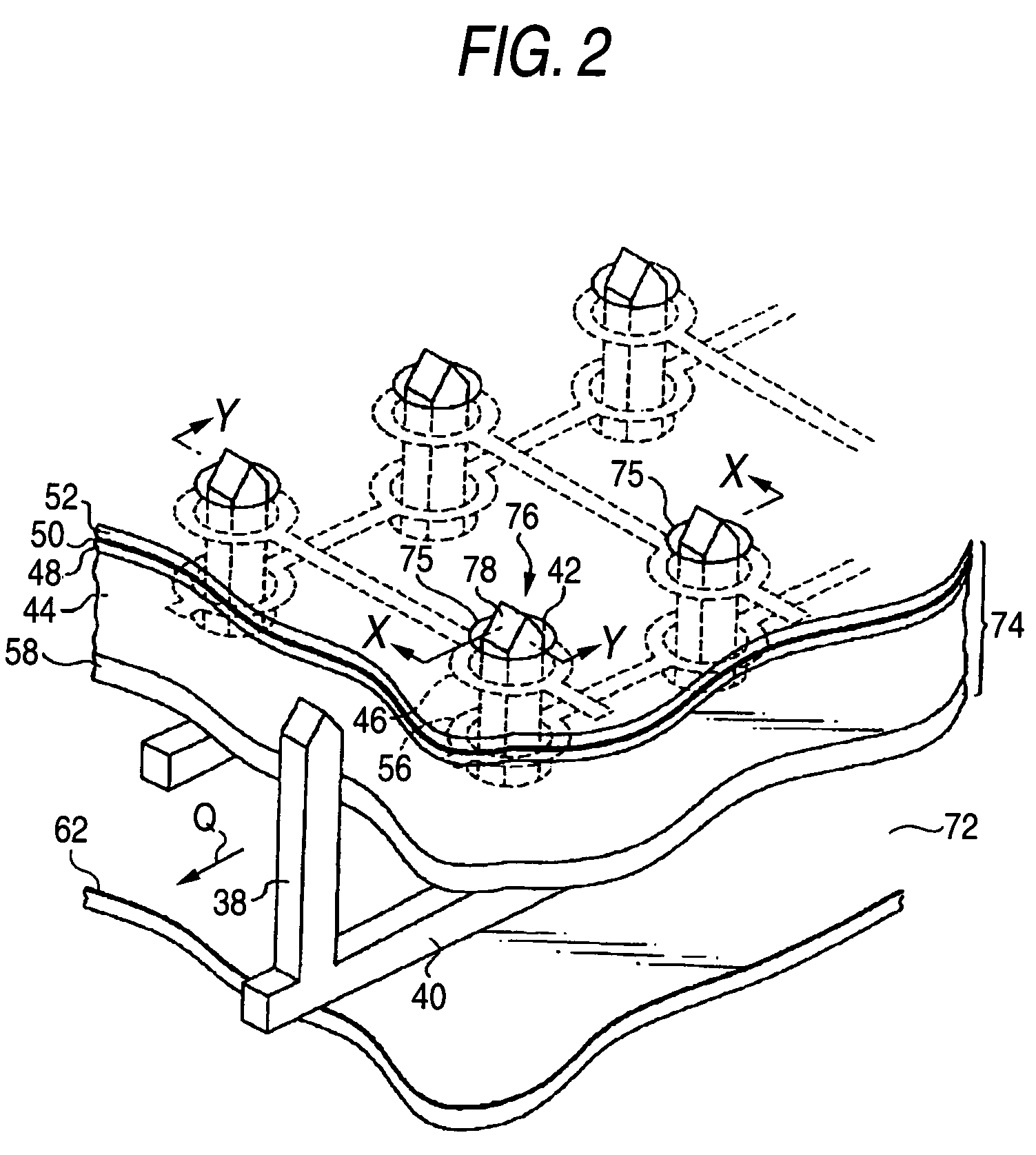Inkjet recording method
a technology of inkjet and recording method, which is applied in the field of inkjet recording method, can solve the problems of high operating cost of thermal transfer system, waste of materials, and high operating cost of apparatus therefor
- Summary
- Abstract
- Description
- Claims
- Application Information
AI Technical Summary
Benefits of technology
Problems solved by technology
Method used
Image
Examples
example 1
Materials Used
[0147]The following materials were used in Example 1.[0148]Cyan pigment (colorant): Phthalocyanine pigment, C.I. Pigment Blue (15:3) (LIONOL BLUE FG-7350, manufactured by Toyo Ink Mfg. Co., Ltd.)[0149]Coating agent: [AP-1][0150]Dispersing agent: [BZ-2][0151]Charge controlling agent: [CT-1][0152]Dispersion medium: Isopar G (manufactured by Exxon Corp.)
[0153]The structures of Coating agent [AP-1], Dispersing agent [BZ-2] and Charge controlling agent [CT-1] are shown below.
[0154]
[0155]Coating agent [AP-1] was obtained by conducting radical polymerization of styrene, 4-methylstyrene, butyl acrylate, dodecyl methacrylate and 2-(N,N-dimethylamino)ethyl methacrylate using a known polymerization initiator, and reacting the resulting polymer with methyl tosylate. Coating agent [AP-1] had a weight average molecular weight of 15,000, a polydispersion degree (weight average molecular weight / number average molecular weight) of 2.7, a glass transition point (mid-point) of 51° C., an...
example 2
[0170]Initial feeding ink composition [DM-1S] and Replenishing ink composition [DM-1R] were prepared in the same manner as in Example 1 except that a magenta pigment, C.I. Pigment Red 57:1 (Brilliant Carmine 6B (trade name: L. R. FG-4213), manufactured by Toyo Ink Mfg. Co., Ltd.) was used in place of the cyan dye employed in the preparations of Initial feeding ink composition [DC-1S] and Replenishing ink composition [DC-1R] in Example 1. Physical properties of the ink compositions thus obtained are shown in Table 2 below. The inkjet image recording was conducted in the same manner as in Example 1 using the ink compositions thus obtained. The results obtained are shown in Table 3 below. As is apparent from the results shown in Table 3, difference in the image density is hardly observed between the first sheet and the 100th sheet and stable ejection property is confirmed.
example 3
[0175]Initial feeding ink composition [DY-1S] and Replenishing ink composition [DY-1R] were prepared in the same manner as in Example 1 except that a yellow pigment composed of a mixture of C.I. Pigment Yellow 180 (Toner Yellow HG, manufactured by Clariant Ltd.) and C.I. Pigment Yellow 139 (Novoperm Yellow M2R 70, manufactured by Clariant Ltd.) in a weight ratio of 1:1 was used in place of the cyan dye employed in the preparations of Initial feeding ink composition [DC-1S] and Replenishing ink composition [DC-1R] in Example 1. Physical properties of the ink compositions thus obtained are shown in Table 4 below. The inkjet image recording was conducted in the same manner as in Example 1 using the ink compositions thus obtained. The results obtained are shown in Table 5 below. As is apparent from the results shown in Table 5, difference in the image density is hardly observed between the first sheet and the 100th sheet and stable ejection property is confirmed.
PUM
 Login to View More
Login to View More Abstract
Description
Claims
Application Information
 Login to View More
Login to View More - R&D
- Intellectual Property
- Life Sciences
- Materials
- Tech Scout
- Unparalleled Data Quality
- Higher Quality Content
- 60% Fewer Hallucinations
Browse by: Latest US Patents, China's latest patents, Technical Efficacy Thesaurus, Application Domain, Technology Topic, Popular Technical Reports.
© 2025 PatSnap. All rights reserved.Legal|Privacy policy|Modern Slavery Act Transparency Statement|Sitemap|About US| Contact US: help@patsnap.com



